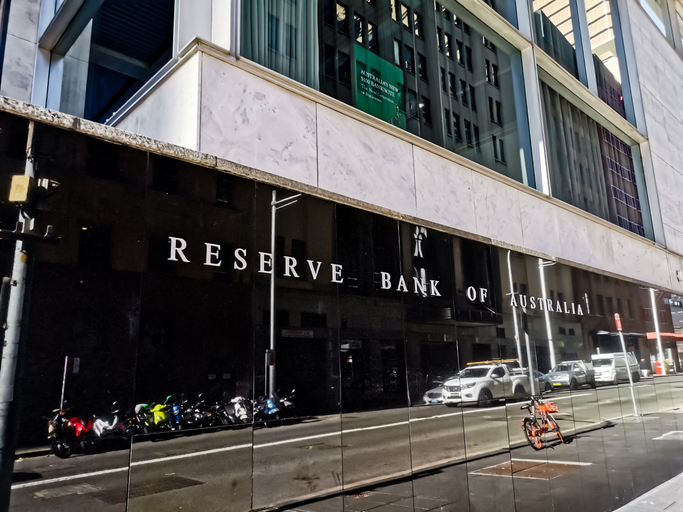Insights
A property investor’s look at the 2024 financial year
Published
02 July, 2024

When the RBA began hiking rates back in March 2022, the property market saw a blatant decline in transactions, enquiries and confidence. Uncertainty plagued investors and many headlines in those months until December 2023—where we witnessed a total cash rate increase of 4.25 per cent—were forecasts and warnings of severe turbulence (especially for borrowers).
But instead, we saw resilience. Not everywhere, of course (for example, don’t assume east coast office property investors are as excited about the market’s future as Perth CBD office investors). But across many regions and asset classes, investor confidence is rife.
Who really knows whether the RBA’s rate hikes are done with. We’ll get to that soon. But from residential markets to office buildings, demand has risen, quality stock has been soaked up by adamant buyers and in the commercial market, high-quality premises have been occupied by future-thinking national and international tenants.
It was a big 12 months. Let’s dissect all the major movements in the 2024 financial year across Australia’s vast real estate landscape.
Australia’s housing market in 2024
Australia’s residential property markets saw a range of seasons in the 2024 financial year. Rising interest rates cooled housing demand in particular segments and moderate price growth swept across key east coast cities, like Sydney and Melbourne. Prices in these areas have simply become too high for the market to support and many dwelling values have hit their ceiling.
But the same cannot be said for the entire nation. Despite the extra borrowing costs, strong population growth and limited supply continues to drive demand in many regions. Perth is seeing a lot of this, as we’ve discussed many times.

Inflation has pushed up construction costs, leading developers to focus on retrofitting existing properties, contributing to tighter supply and low rental vacancies. Regional markets across the nation, such as the Sunshine Coast, Geelong and the northeastern corridors in WA, have seen an influx of new arrivals, thanks to the affordable housing and slower lifestyles on offer. Expect this to continue as the nation’s median price range continues to reach new highs.
Office property investment blossoms in Perth’s CBD
The 2024 financial year has seen Perth’s CBD step into the limelight as a popular investment target. In the last 12 months, headlines have made calls of a ‘national office crisis’, with journalists telling investors there was no safe office haven to place your money. Meanwhile, as we stated in our Perth CBD office white paper, Perth CBD vacancies continued to decrease, demand bolstered and the leasing market experienced a significant flight to quality. This continues today.

Despite national headlines’ grim reporting (often forgetting to even mention the west), there’s been renewed interest from both national and international investors, with institutional investors eyeing off high-quality space with a 6000 postcode. The market has turned a corner due to its lack of supply, minuscule development pipeline and increased demand for high-quality office space.
The west has bucked the working from home trend seen so prominently on the east coast. It simply never took in WA, while on the east coast many employees have an expectation to see flexible work arrangement offers on their employee contracts. It’s a relief for WA office property investors, who are see rising occupancy levels thanks to continued relevance for a centralised workplace.
Industrial property markets glow across the country
The industrial property market remained a standout performer in 2024. Sydney, Melbourne and Brisbane all witnessed significant investment in logistics hubs, driven by increasing e-commerce relevance and efficient supply chain operations.
Industrial land is scarce. It has been for the last few years, when word got out about the burgeoning asset class. And the high cost of new construction has led to record-low vacancy rates and rising rents in this sector. Warehouses, as a result, just aren’t priced how they used to. The value of four steel walls on high-quality land in relevant locations has reached phenomenal levels. How much further they will grow is questionable.
RBA decisions and interest rate forecasts

The financial year saw several interest rate hikes by the Reserve Bank of Australia (RBA), of course intended to curb rising inflation. These rate increases have impacted the bottom line of commercial real estate deals, with borrowing costs eating their way into landlords’ profits.
For investors, rising rates has led to a reassessment, not just of investment strategies, but of investment expectations. A plus-9-per cent yield has reached unicorn status across the country, but that said, the commercial property market has shown resilience in the face of higher borrowing costs, with the asset class remaining an excellent choice for those looking for sturdy cash flow? and passive income.
Forecasts suggest that interest rates may have peaked, and there could be a potential easing towards the latter part of 2025. We—like all investors with a finger on the pulse—are monitoring these developments closely??.
Inflation in 2024
Inflation has been a major concern for the Australian economy and the country’s policy makers. Annual CPI inflation was 3.6 percent in the March 2024 quarter, down from the 4.1 percent annual increase in the previous quarter.
Rising inflation has driven construction costs to new highs, seriously affecting new developments and renovations. In the 12 months to June 30, 2024, it led to a real preference for retrofitting existing properties over building new. This goes for both residential and commercial—inflation, nor construction and labour costs, discriminate between the two markets.
But what next? Have the RBA’s cash rate decisions had any impact on inflation? Well, after 13 consecutive rate rises, inflation continues to come in higher than expert forecasts. So, you be the judge.
Investor and consumer confidence
Remaining robust, despite a few economic headwinds in the post-COVID era, is investor confidence.

Back in the 2023 financial year, year-to-year capital flow into the Australian real estate market saw a 31-per cent reduction. We’re not at a point of knowing what the most recent year-on-year numbers are, but given solidly performing commercial markets and the incredible once-in-a-decade residential markets, we’d expect an average year-on-year increase of around 20% in various key markets, highlighting a solid post-pandemic recovery and renewed investor confidence.?
But consumer confidence has fluctuated, influenced by the rising cost of living (brought on by our gravity-defying inflation metrics). That said, according to ANZ, consumer confidence remains steady in the days leading to the new financial year—perhaps reflective in yet another RBA decision in June 2024 to leave interest rates unchanged.
Outlook for the 2025 financial year
Looking ahead to the 2025 financial year, investors should continue to focus on the most relevant asset classes and locations. Staying within budget, cementing their yield targets and understanding what makes a relevant investment, are the fundamental goals each investor might want to consider. No one has a crystal ball, and more rate rises are certainly within the realms of possibility. Investors should consider this too.
Knowledge is king. And the 2024 financial year has been laced with confusing—and often conflicting—information. Our final word is that investors should take mainstream headlines with a grain of salt. Stick with solid data and expert opinions from reliable sources. And what better place to start than by subscribing to our monthly newsletter.
As a Properties & Pathways subscriber, you’ll receive a tonne of useful market information and investment nous that you can apply to your next acquisition. Subscribe today and our first email will hit your inbox in minutes.



